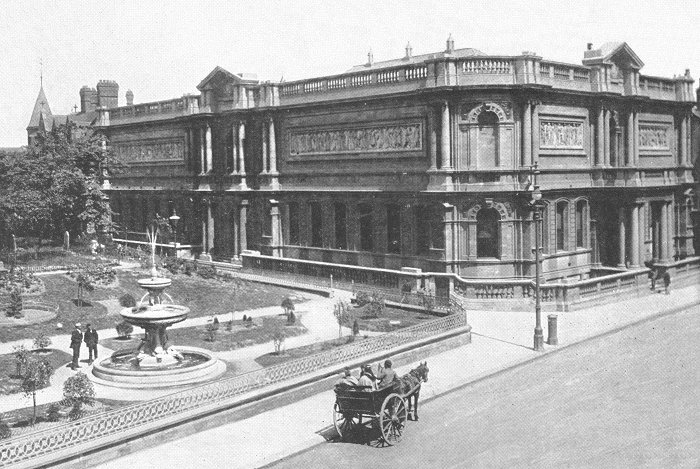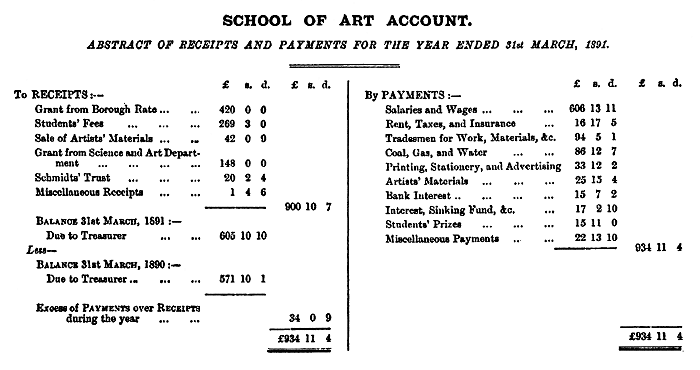|
The Municipal School
of Art and Crafts
For some time it had been
considered that a new school of art, complete with
up-to-date resources, should be built on a site
adjoining the art gallery, and placed under the control
of the Corporation. Such a municipal institution would
greatly benefit the town, but it could not happen unless
the building was paid-for by private individuals.
Luckily, the Art Gallery’s benefactor, Philip Horsman,
bought the Darlington Street premises for £2,000, and
the money was put aside towards the cost of the new
building.
Other benefactors included John and
Joseph Jones, who gave £1,000, Samuel Theodore Mander,
who gave £250, Arthur Briscoe, who gave £300, Henry
Loveridge, who gave £200, and Edward Shaw who also gave
£200. Donations of £100 were received from Captain
Perry, Miss White, and Mr. C. Wells. The project also
received a Government grant of £1,000, which with other
donations made the total up to £5,575.
The land was given by the town
council, and building work rapidly got underway. It was
built as part of the art gallery building by Philip
Horsman & Company, using identical materials. The ground
floor rooms consisted of two rooms for teaching machine
and building construction, one 24 feet by 70 feet, and
another 20 feet square. There were large and small elementary
drawing rooms, around the same size as those already
mentioned, an antique and life room, 24 feet by 47 feet,
a painting room with access to the art gallery, 24 feet
by 32 feet, a light and shade room, the master’s room,
men and women’s cloak rooms and toilets. In the basement
was a modelling and design room, 61 feet by 26 feet. The
building could accommodate between 500 and 600 pupils.

Wolverhampton Art Gallery and
School of Art and Crafts. The school entrance faces St.
Peter's Gardens.
The Municipal School of Art and
Crafts officially opened on 21st June, 1885. A public
reception was held by the mayor, John Annan, with guests
including A. J. Mundella, M.P., President of the Board
of Trade, and William Woodall, Financial Secretary to
the War Office.
Fees were as follows:
|
Students attending
evening classes for craftsmen and
craftswomen - 5 shillings per quarter.
Students attending
higher level evening classes - 7 shillings
and six pence per quarter.
Students attending day
classes - £1.1s.0d. per quarter. |
Mr. Archibald Gunn continued as
Headmaster.
Parts of the Darlington Street
building continued to be used by the school, the
remainder being occupied by the Y.M.C.A.
Student numbers gradually
increased. There were 253 students in 1890, 110 of whom
took examinations. 70 of them passed. In the following
year there were 311 students. 87 out of 174 of them
passed their exams.

The 1891 accounts. From the
Wolverhampton Red Book.
In 1894 Mr. C. F. Schmidt left £641
in his will to be invested. The interest was to be used
to provide scholarships or prizes in his name. In 1896 a
total of 304 students passed their exams, and a further
23 passed the science exam. At the time there were 383
students. Two silver and three bronze medals were won,
and seven Queen’s prizes were awarded for works sent to
London.
In late 1908 or early 1909 the school acquired the fine
brick-built building at the back, in Wulfruna Street,
now known as the art gallery annexe. It had previously
been occupied by the Wolverhampton Board of Guardians.
The building is listed in the 1908 Wolverhampton Red
Book as being used by the Guardians, but not in the 1909
edition. |